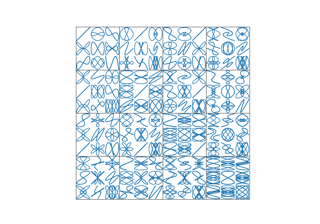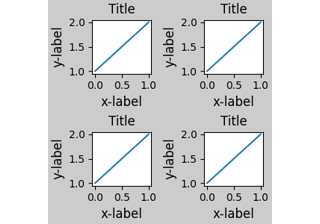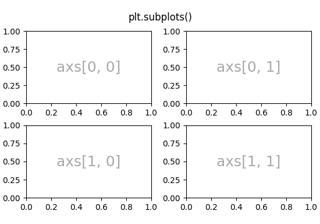matplotlib.gridspec.SubplotSpec#
- class matplotlib.gridspec.SubplotSpec(gridspec, num1, num2=None)[source]#
Bases:
objectThe location of a subplot in a
GridSpec.Note
Likely, you'll never instantiate a
SubplotSpecyourself. Instead you will typically obtain one from aGridSpecusing item-access.- Parameters:
- gridspec
GridSpec The GridSpec, which the subplot is referencing.
- num1, num2int
The subplot will occupy the num1-th cell of the given gridspec. If num2 is provided, the subplot will span between num1-th cell and num2-th cell inclusive.
The index starts from 0.
- gridspec
- get_geometry()[source]#
Return the subplot geometry as tuple
(n_rows, n_cols, start, stop).The indices start and stop define the range of the subplot within the
GridSpec. stop is inclusive (i.e. for a single cellstart == stop).
- get_topmost_subplotspec()[source]#
Return the topmost
SubplotSpecinstance associated with the subplot.
- property num2#
- subgridspec(nrows, ncols, **kwargs)[source]#
Create a GridSpec within this subplot.
The created
GridSpecFromSubplotSpecwill have thisSubplotSpecas a parent.- Parameters:
- nrowsint
Number of rows in grid.
- ncolsint
Number or columns in grid.
- Returns:
- Other Parameters:
- **kwargs
All other parameters are passed to
GridSpecFromSubplotSpec.
See also
Examples
Adding three subplots in the space occupied by a single subplot:
fig = plt.figure() gs0 = fig.add_gridspec(3, 1) ax1 = fig.add_subplot(gs0[0]) ax2 = fig.add_subplot(gs0[1]) gssub = gs0[2].subgridspec(1, 3) for i in range(3): fig.add_subplot(gssub[0, i])
Examples using matplotlib.gridspec.SubplotSpec#
Arranging multiple Axes in a Figure


